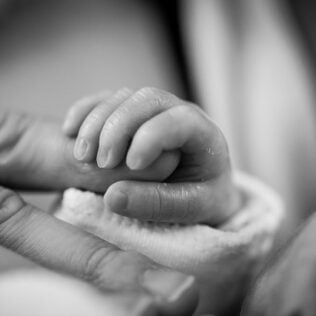There are many types of birth injuries that stem from medical malpractice, but brachial plexus palsy, bone fractures, brain damage, facial nerve damage, and head trauma are some of the most common. Although some birth injuries heal on their own, others increase the risk of serious medical conditions, cause physical or mental impairments, or result in death.
Medical professionals are expected to use an appropriate level of caution and good judgment in providing routine care, as well as preparing for and responding to complicated or dangerous birthing situations. When medical professionals fail to meet the acceptable standard of care during pregnancy and the birthing process and babies are injured, doctors, nurses, and hospitals can be held liable.
Labor and Delivery Problems Can Be Life-Changing
Birth injuries resulting from medical malpractice or negligence can be life-changing for parents and their babies. Immediate issues such as infections, neonatal jaundice, oxygen deprivation, too high or too low blood pressure, nerve damage, and skull or brain bleeds can cause permanent impairments, lead to serious medical conditions, or become life-threatening.
When medical mistakes cause birth injuries, victims may require extensive medical treatment for the rest of their lives. Physical and mental impairments may make it difficult for them to enjoy ordinary activities. They may need special equipment like wheelchairs, breathing machines, or feeding tubes.
Some of the most common birth injuries caused by medical malpractice include:
1. Brachial Plexus Injuries
Brachial Plexus Injuries occur in about one to three in every 1,000 births. When a physician pulls too hard or incorrectly during delivery, damage to the infant’s brachial plexus (the bundle of nerves between the infant’s neck and shoulders) can occur. Erb’s palsy may be caused by over-stretching the infant’s shoulders during head-first deliveries or putting too much pressure on babies’ raised arms during breech deliveries. Babies with this condition may have weakness or partial or total paralysis of the arm on the affected side.
2. Cerebral Palsy
Cerebral palsy can result from brain damage before or during birth. According to the Centers for Disease Control and Prevention, cerebral palsy is the most common childhood motor disability and may cause effects such as stiff muscles, uncontrollable movements, and poor coordination or balance. Failing to diagnose and appropriately treat certain infections or conditions affecting unborn babies or mothers during pregnancy may contribute to cerebral palsy, as can the use of various delivery assistance tools.
3. Fractures
To aid with difficult deliveries, medical professionals may pull infants while they make their way through the birth canal. Forcefully pulling babies can put too much pressure on certain bones or joints, which may result in breaks. Clavicle fractures are common birthing injuries. These types of breaks typically heal.
4. Head Trauma
Head trauma that occurs during delivery may result in caput succedaneum. The improper use of a vacuum extraction tool is the most common cause of caput succedaneum. This condition is characterized by significant swelling of the soft tissues of newborns’ scalps. Although the swelling usually subsides within days, caput succedaneum can cause jaundice, which, if left untreated, can cause serious health problems.
Also resulting from head trauma during or after birth, bleeding underneath the cranium in newborns is a condition known as cephalohematoma. This condition increases infants’ risk for anemia, hypotension, jaundice, and in some cases, meningitis.
5. Facial Nerve Damage
Trauma during birth can result in facial nerve damage for infants, causing facial nerve palsy. Often resulting from the use of delivery tools, damage to the facial nerves may cause symptoms such as the inability to close the eye on the affected side, the lower face appearing uneven while crying, the mouth not moving the same way on both sides while crying, and paralysis on the affected side. In some cases, paralysis may resolve on its own. In other situations, infants may require special therapy or surgery.
Causes of Birth Injuries
There are inherent risks in pregnancy and the birthing process, but many birth injuries are the result of failures or mistakes on the part of medical providers. Some of the most common contributors to the occurrence of birth injuries include the following:
- Neglecting to adequately monitor babies’ heartbeats for signs of distress;
- Failing to properly screen and diagnose high-risk pregnancy conditions in mothers;
- Not performing a timely C-section; and
- Failing to diagnose and attend to infections in mothers and fetuses
While interventions are sometimes necessary to prevent harm from coming to mothers or their infants, there are situations in which such actions may cause birth injuries. For example, misusing birth tools such as vacuum extractors or forceps may cause serious injuries for newborns. Birth injuries may also occur when physicians use too much force to twist or pull babies during delivery.

